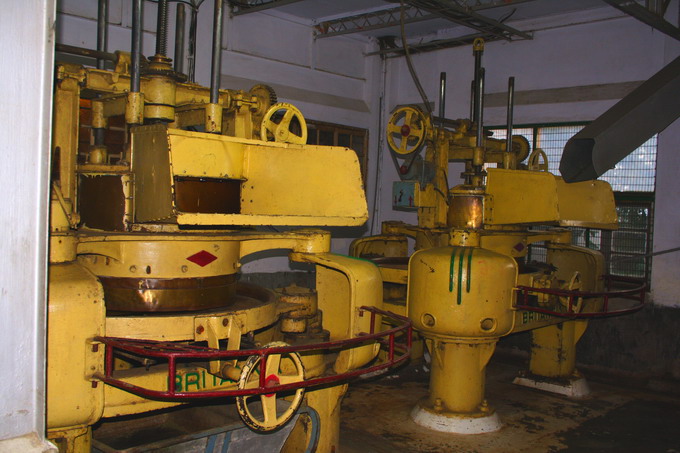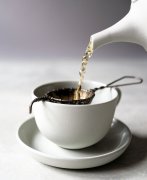What are the steps of making black tea by hand? Relationship between fermentation technology and quality of black tea
After the withering process, the tea is sent to use a traditional rolling machine for the rolling process. This machine was invented by the British centuries ago. Usually a machine can process 70-100 kilograms of tea in each batch. The rolling is done by two machines, and the output of the two machines is collected. When the moisture content decreased further, the total weight of tea decreased from 70kg to 50-60kg. So the final output of the two machines is 50+50kg=100kg. This is why the minimum volume of Darjeeling tea trade is always between 100kg and 150kg. A large quantity of tea is too much for a small company. This is the origin of the idiom "many". A large amount of tea is too big for a small tea merchant.
When making high-quality tea, it is important to avoid heating. The rolling process is carried out alternately with and without pressure to release the heat generated by friction. If you increase the processing volume or speed, the temperature may increase, which will affect the quality. It is critical to use smaller capacity and longer processing time. After all, tea is unique in terms of quality and price, because it takes more time to process and is carefully made.
In the process of rolling, the tea is screened into different sizes. The large leaves are sent back to the rolling machine for further rolling to reduce their size.
In the process of rolling, the tea is screened by the machine. The purpose of screening is:

Cool down the tea leaves
2) divide the tea into different sizes.
The largest and second largest leaves are sent back to the rolling mill. The better leaves are sent to ferment. The tea is spread on the fermentation plate. These particles are usually used to make tea bags or mixed teas. The fermentation process usually takes place on the floor. However, due to hygiene reasons, our suppliers use stainless steel pallets. We have noticed that this is a good practice.
The purpose of the drying process is:
1) heating the tea at high temperature to inactivate the enzyme and stop fermentation.
2) reduce the moisture content of tea to less than 5%.
Important Notice :
前街咖啡 FrontStreet Coffee has moved to new addredd:
FrontStreet Coffee Address: 315,Donghua East Road,GuangZhou
Tel:020 38364473
- Prev

The fermentation process of black tea production technology Video black tea production method wilting process diagram
Unlike ordinary black tea, Darjeeling Tea's color is not black. It seems to be a combination of yellow, green and red tea. In particular, the first blush in Darjeeling is green. Its taste is also different from that of black tea. It is very similar to oolong tea. Why is Darjeeling Tea so special? In the past, it was thought that this was caused by the unique weather conditions and environment of Darjeeling.
- Next

Darjeeling black tea brewing water temperature time weight black tea correct brewing parameters share how to preserve tea
Darjeeling Tea, the recommended brewing method, is not suitable to drink with milk because it contains little tannin. Water when you use tap water, it is necessary to use filtered water made up of activated carbon filters. Otherwise, you won't be able to taste the real tea. If you use commercial mineral water, it is important to choose natural mineral water. Do not use distilled water or reverse osmosis to treat water. this
Related
- The milk tea cup becomes smaller?! Overlord Tea Girl launches a new "Return to Yunnan" series
- Accused of selling counterfeit and high-priced coffee beans! Well-known boutique coffee brand "Oukelao" bowed and apologized!
- How to make espresso dumplings? Can I eat coffee and glutinous rice balls together?
- Save the unformed and stagnant powder cakes in one second! What is the problem with stagnant water in the powder bowl of the espresso machine?
- What does hand-brewed coffee stop mean? Why is it not recommended to make coffee by hand?
- Is it normal to smell like coffee? Why does coffee smell like alcohol? What's wrong with the strong smell of cold extract ice dripping ice brewed coffee?
- How to solve the problem that hand-brewed coffee extraction takes too long? Why is the water flowing so slowly when making coffee?
- The main points of making Australian white coffee, the proportion details, how does Australian white properly foam and blend the flowers?
- Can ice water make cold extract coffee? What is the difference between room temperature water and ice water for making cold coffee?
- What milk is best for making latte and white Dirty coffee? What is the difference between different brands of fresh milk and pure milk for making coffee?

